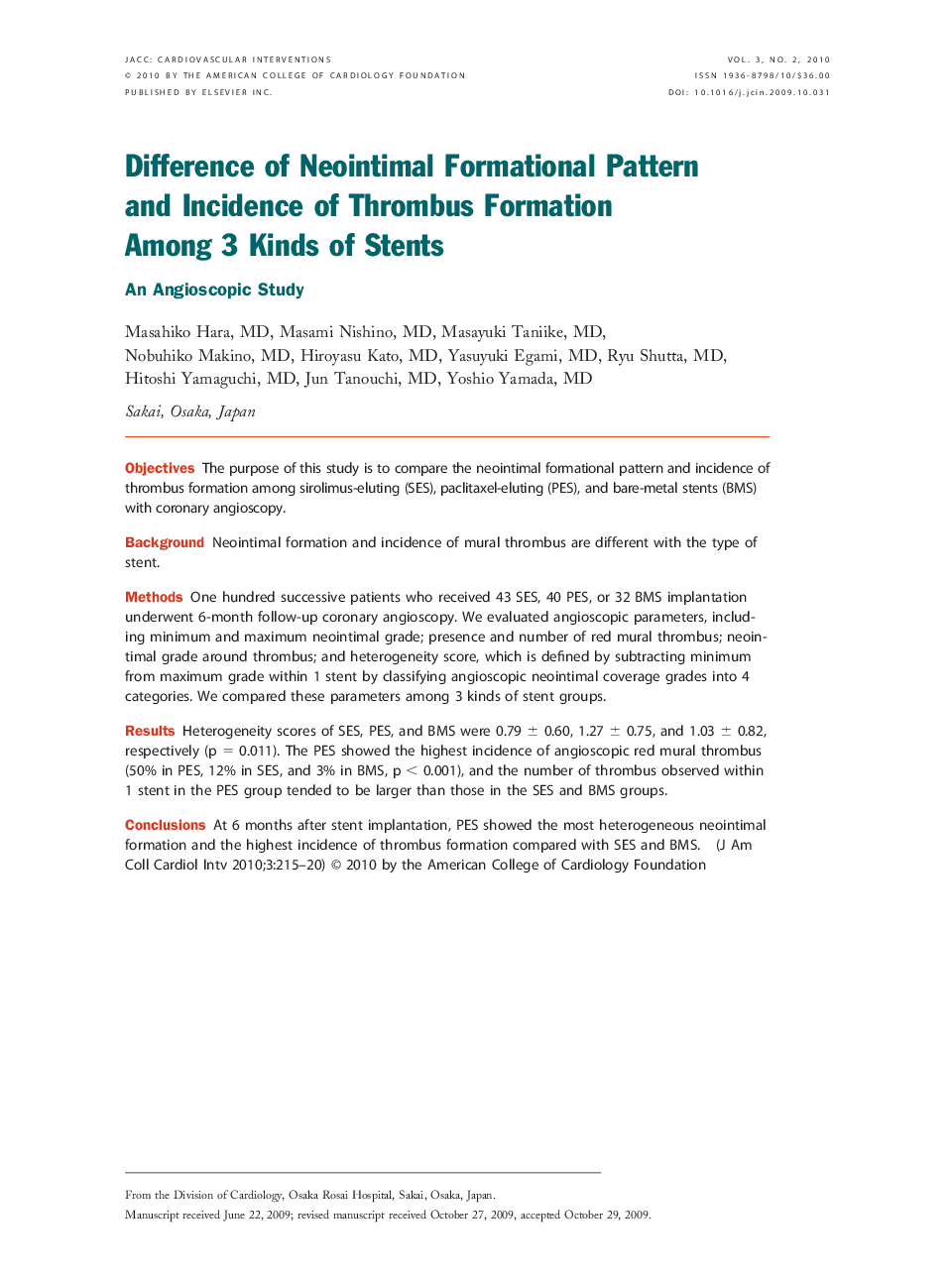| Article ID | Journal | Published Year | Pages | File Type |
|---|---|---|---|---|
| 2941962 | JACC: Cardiovascular Interventions | 2010 | 6 Pages |
ObjectivesThe purpose of this study is to compare the neointimal formational pattern and incidence of thrombus formation among sirolimus-eluting (SES), paclitaxel-eluting (PES), and bare-metal stents (BMS) with coronary angioscopy.BackgroundNeointimal formation and incidence of mural thrombus are different with the type of stent.MethodsOne hundred successive patients who received 43 SES, 40 PES, or 32 BMS implantation underwent 6-month follow-up coronary angioscopy. We evaluated angioscopic parameters, including minimum and maximum neointimal grade; presence and number of red mural thrombus; neointimal grade around thrombus; and heterogeneity score, which is defined by subtracting minimum from maximum grade within 1 stent by classifying angioscopic neointimal coverage grades into 4 categories. We compared these parameters among 3 kinds of stent groups.ResultsHeterogeneity scores of SES, PES, and BMS were 0.79 ± 0.60, 1.27 ± 0.75, and 1.03 ± 0.82, respectively (p = 0.011). The PES showed the highest incidence of angioscopic red mural thrombus (50% in PES, 12% in SES, and 3% in BMS, p < 0.001), and the number of thrombus observed within 1 stent in the PES group tended to be larger than those in the SES and BMS groups.ConclusionsAt 6 months after stent implantation, PES showed the most heterogeneous neointimal formation and the highest incidence of thrombus formation compared with SES and BMS.
